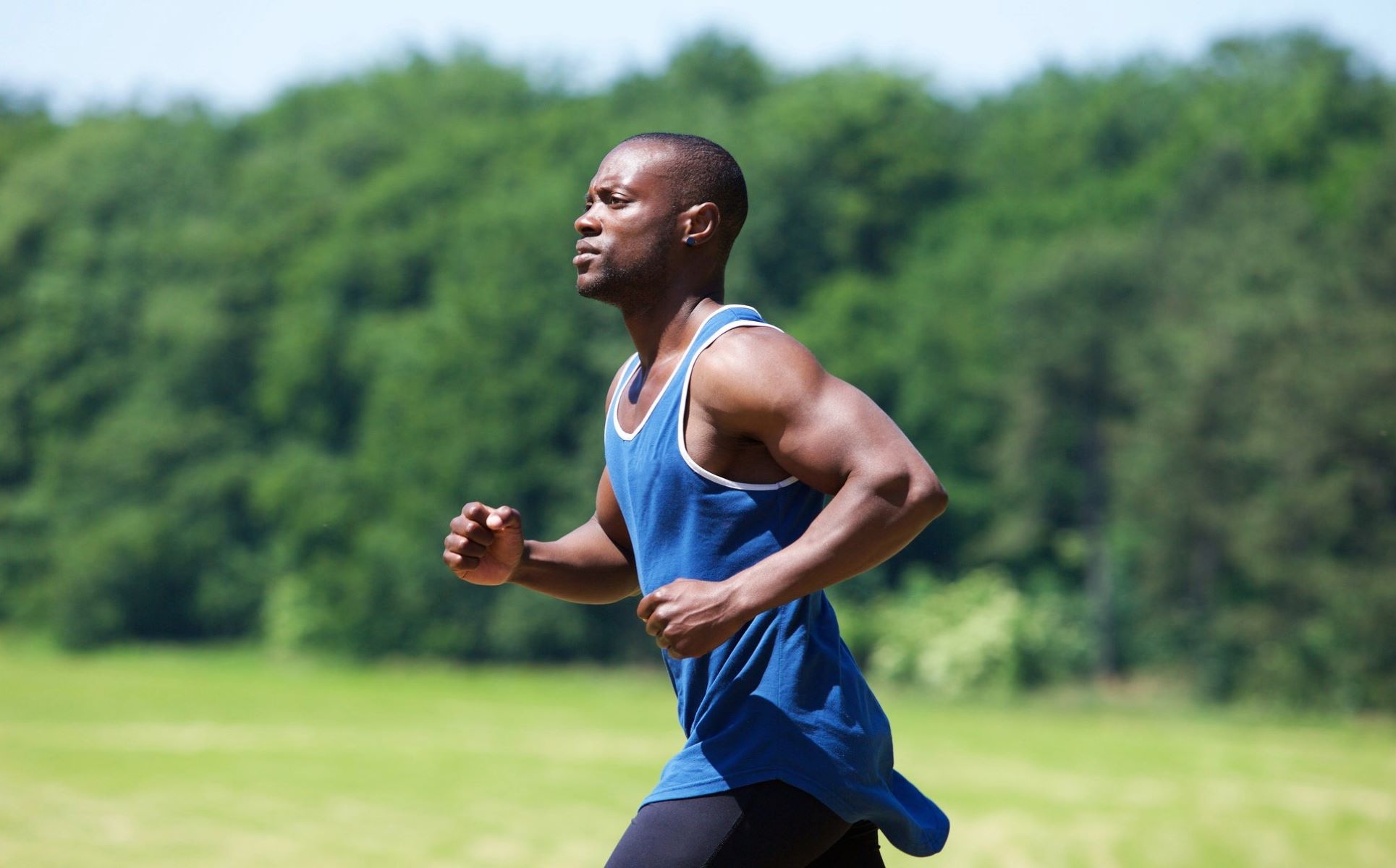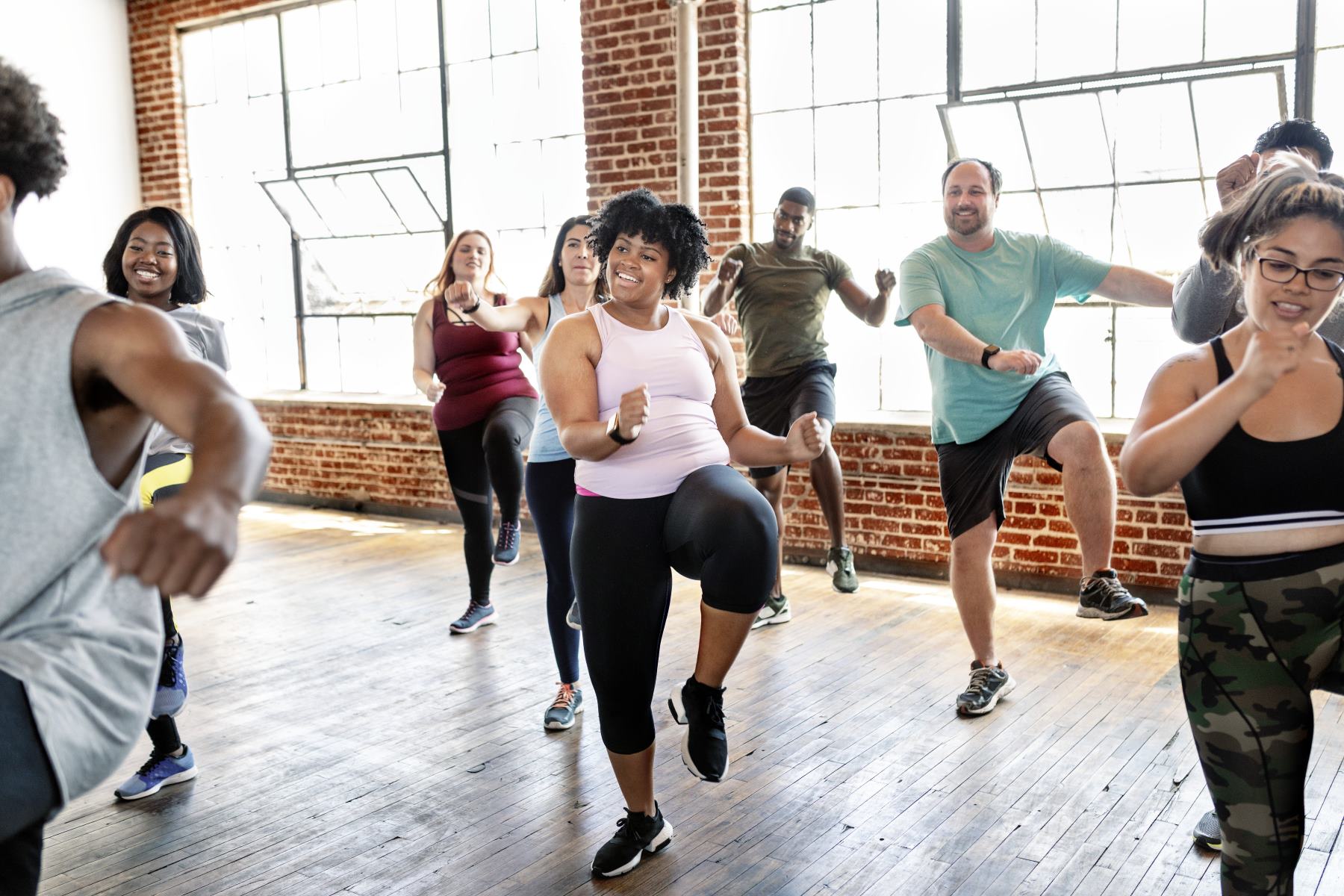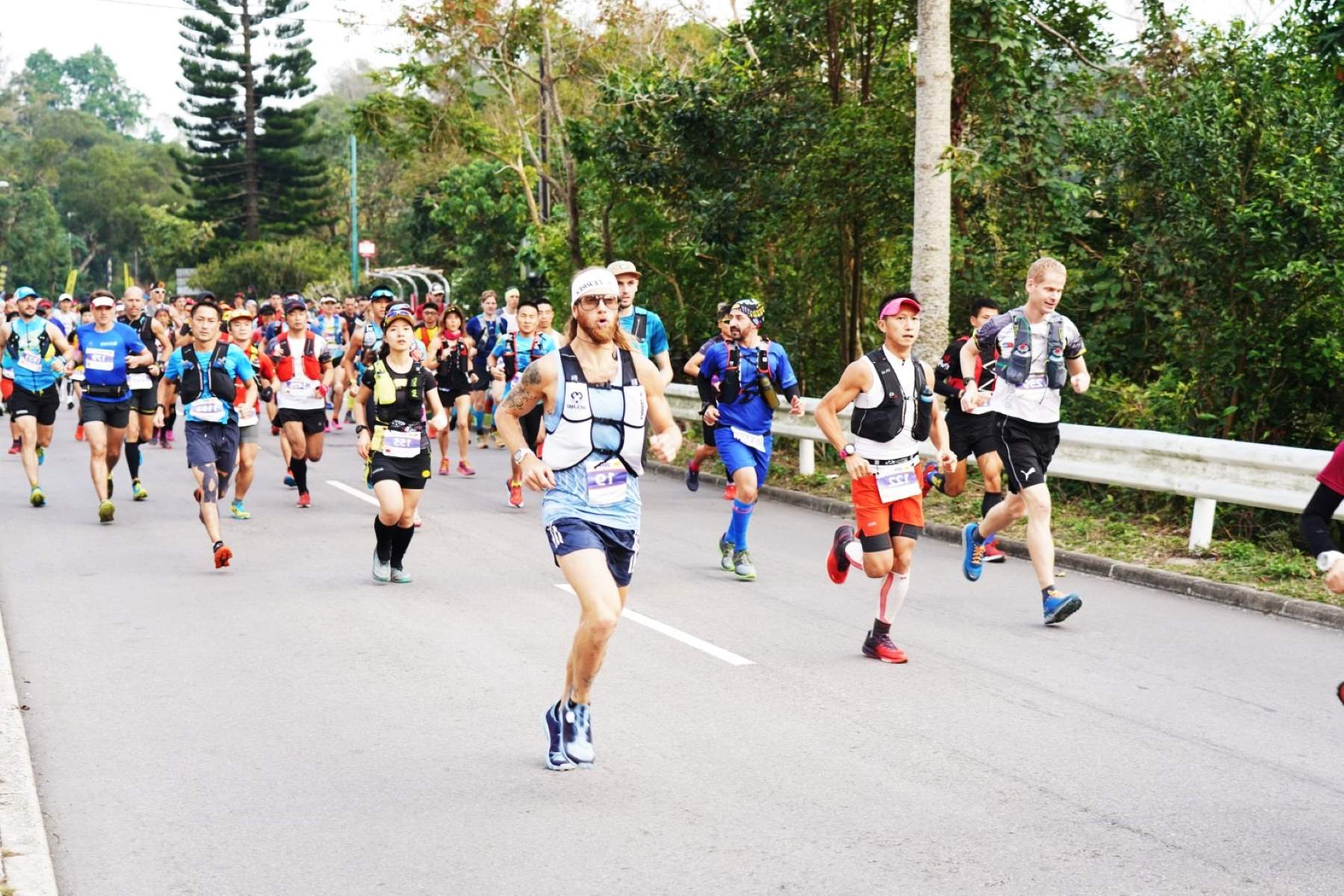Home>Training & Techniques>Maximizing Your Running Performance With Brick Sessions


Training & Techniques
Maximizing Your Running Performance With Brick Sessions
Published: March 1, 2024
Enhance your running performance with brick sessions. Discover effective training and techniques to improve your endurance and speed. Unlock your full potential today!
(Many of the links in this article redirect to a specific reviewed product. Your purchase of these products through affiliate links helps to generate commission for Therunningadvisor.com, at no extra cost. Learn more)
Table of Contents
- The Benefits of Incorporating Brick Sessions into Your Running Training
- How to Structure Your Brick Sessions for Maximum Running Performance
- Tips for Transitioning Smoothly from Cycling to Running in Brick Sessions
- The Importance of Nutrition and Hydration in Brick Sessions
- Avoiding Overtraining and Injury in Brick Sessions
- Sample Brick Session Workouts for Different Running Goals
The Benefits of Incorporating Brick Sessions into Your Running Training
Brick sessions, a combination of cycling and running workouts, offer a myriad of benefits that can significantly enhance your overall running performance. By seamlessly transitioning from cycling to running, you can effectively simulate the fatigue and muscle stress experienced during triathlons or duathlons. Here are the key advantages of incorporating brick sessions into your running training:
-
Improved Muscular Adaptation: Engaging in brick sessions challenges your muscles to adapt to the unique demands of running immediately after cycling. This helps improve your body's ability to efficiently transition from one discipline to another, ultimately enhancing your overall race performance.
-
Enhanced Cardiovascular Endurance: By seamlessly transitioning from cycling to running, your cardiovascular system is pushed to adapt to the rapid change in physical demands. This leads to improved cardiovascular endurance, enabling you to sustain higher intensities during races and training sessions.
-
Refined Running Technique: Brick sessions provide an opportunity to refine your running technique under pre-fatigued conditions. This can be particularly beneficial for triathletes and duathletes, as it simulates the experience of running after completing the cycling leg of a race.
-
Mental Toughness: Enduring the physical and mental challenges of transitioning from cycling to running can significantly enhance your mental toughness. This mental resilience is invaluable during races, especially in the latter stages when fatigue sets in.
-
Efficient Nutrient Utilization: Engaging in brick sessions can help your body become more efficient at utilizing nutrients during the transition from cycling to running. This can positively impact your race performance by ensuring that your body efficiently utilizes energy stores.
Incorporating brick sessions into your running training regimen can yield substantial benefits, ultimately leading to improved race performances and overall athletic development. These sessions not only enhance your physical capabilities but also fortify your mental resilience, making them a valuable addition to any runner's training program.
How to Structure Your Brick Sessions for Maximum Running Performance
Structuring your brick sessions effectively is crucial for maximizing your running performance. By carefully planning and executing these sessions, you can optimize the physiological adaptations that occur when transitioning from cycling to running. Here's a comprehensive guide to structuring your brick sessions for maximum running performance:
1. Gradual Progression:
Begin with shorter brick sessions and gradually increase the duration and intensity as your body adapts to the demands of transitioning from cycling to running. This progressive approach allows your muscles and cardiovascular system to acclimate to the unique challenges posed by brick workouts.
2. Focus on Specificity:
Tailor your brick sessions to mimic the conditions of your target race. If you're training for a triathlon, incorporate longer cycling segments followed by a run to simulate race-day conditions. This specificity helps condition your body to perform optimally during the critical transition from cycling to running.
3. Integrate Interval Training:
Incorporate interval training into your brick sessions to improve your body's ability to handle rapid changes in intensity. Alternating between high-intensity cycling segments and challenging runs can enhance your overall fitness and prepare you for the demands of competitive racing.
4. Emphasize Transition Practice:
Allocate time within your brick sessions to practice the transition from cycling to running. This can involve setting up a designated transition area where you practice quickly switching from cycling shoes to running shoes. Efficient transitions can make a significant difference in race performance, so honing this skill during training is essential.
5. Prioritize Recovery:
Allow adequate recovery time between your brick sessions to prevent overtraining and reduce the risk of injury. Recovery is crucial for facilitating adaptation and ensuring that your body can consistently perform at its best during subsequent workouts.
6. Incorporate Race Simulation:
Periodically integrate race simulation brick sessions into your training plan. This involves replicating the race-day sequence of cycling and running to mentally and physically prepare for the challenges of competition. By simulating race conditions, you can fine-tune your pacing strategies and optimize your overall performance.
By structuring your brick sessions with these key principles in mind, you can effectively enhance your running performance and prepare your body for the unique demands of multi-discipline races. Thoughtful planning and execution of brick workouts are essential for maximizing the physiological and psychological benefits that contribute to peak performance on race day.
Tips for Transitioning Smoothly from Cycling to Running in Brick Sessions
Transitioning smoothly from cycling to running is a critical aspect of brick sessions, as it directly impacts your overall performance and race-day experience. The abrupt shift in muscle engagement and biomechanics requires a strategic approach to ensure a seamless transition. Here are essential tips to help you navigate this transition effectively:
-
Practice Transitions During Training: Dedicate specific training sessions to practicing the transition from cycling to running. By simulating race-day conditions, you can familiarize yourself with the sensations and challenges of swiftly switching disciplines. This practice not only enhances your physical readiness but also instills confidence in your ability to handle the transition under race conditions.
-
Optimize Your Footwear: Choose running shoes that provide the right balance of support and flexibility. Lightweight and breathable shoes with adequate cushioning can ease the impact on your feet as you transition from cycling. Additionally, consider using quick laces or elastic laces to streamline the process of putting on your running shoes during the transition.
-
Gradual Adaptation: Gradually increase the duration and intensity of your brick sessions to allow your body to adapt to the unique demands of transitioning from cycling to running. This gradual adaptation minimizes the risk of injury and allows your muscles and cardiovascular system to acclimate to the swift change in physical demands.
-
Focus on Smooth Cadence: As you transition to running, focus on maintaining a smooth and controlled cadence. Avoid starting too fast, as this can lead to premature fatigue. Gradually build up your running pace to allow your muscles to adjust while conserving energy for the remainder of the run.
-
Mindful Pacing: Be mindful of your pacing during the initial stages of the run. The shift from cycling to running can initially feel awkward, so it's crucial to resist the urge to push too hard in the early moments of the run. Gradually find your rhythm and allow your body to settle into the running motion.
-
Hydration and Nutrition Preparation: Anticipate the transition by strategically hydrating and consuming easily digestible nutrition during the latter part of your cycling segment. This proactive approach ensures that your body is adequately fueled and hydrated as you transition to running, minimizing the risk of sudden energy depletion.
-
Mental Preparation: Mentally prepare for the transition by visualizing a smooth and efficient shift from cycling to running during your training sessions. Cultivating a positive and focused mindset can help alleviate any anxiety or apprehension associated with the transition, allowing you to approach it with confidence and composure.
By implementing these tips, you can enhance your ability to transition smoothly from cycling to running during brick sessions. A well-executed transition sets the stage for a strong and confident start to the running segment, ultimately contributing to improved overall performance and race-day success.
Read more: Maximize Your Run Commute With These 7 Tips
The Importance of Nutrition and Hydration in Brick Sessions
Proper nutrition and hydration play a pivotal role in optimizing performance and mitigating the challenges associated with brick sessions. The seamless transition from cycling to running demands a strategic approach to fueling and hydrating the body effectively. Here's a detailed exploration of the critical importance of nutrition and hydration in brick sessions.
Fueling the Transition
During the cycling segment of a brick session, the body expends a significant amount of energy and depletes glycogen stores. As the transition to running approaches, it becomes essential to strategically fuel the body to support the upcoming physical demands. Consuming easily digestible carbohydrates and electrolytes during the latter part of the cycling segment can help replenish glycogen stores and maintain optimal hydration levels. This proactive approach ensures that the body is primed for the subsequent running segment, minimizing the risk of sudden energy depletion and performance decline.
Hydration Strategies
Effective hydration is equally crucial during brick sessions, especially as the body transitions from cycling to running. Dehydration can impair performance and exacerbate the physiological stress associated with multi-discipline workouts. Integrating hydration strategies that account for both the cycling and running segments is vital. Utilizing a hydration pack or strategically placed water stations along the training route can facilitate seamless access to fluids during the transition. Additionally, practicing fluid intake timing during cycling to align with the impending running segment can help maintain optimal hydration levels as the workout progresses.
Nutrient Utilization Efficiency
The unique physiological demands of transitioning from cycling to running underscore the importance of efficient nutrient utilization. Proper nutrition and hydration practices during brick sessions can enhance the body's ability to efficiently utilize nutrients, ensuring a steady supply of energy to the working muscles. This optimization of nutrient utilization contributes to sustained performance and mitigates the risk of premature fatigue during the transition and subsequent running segment.
Recovery and Adaptation
Strategic nutrition and hydration support post-brick session recovery and adaptation. Consuming a balanced post-workout meal or snack that includes a combination of carbohydrates and protein can facilitate glycogen replenishment and muscle recovery. Adequate hydration post-session aids in the restoration of fluid balance and supports the body's adaptive processes. This comprehensive approach to nutrition and hydration post-brick session is integral to optimizing recovery and preparing the body for subsequent training sessions.
In essence, prioritizing nutrition and hydration in brick sessions is fundamental to optimizing performance, supporting physiological adaptation, and mitigating the challenges associated with transitioning from cycling to running. By strategically fueling and hydrating the body, athletes can enhance their ability to sustain performance and derive maximum benefit from these multi-discipline workouts.
Avoiding Overtraining and Injury in Brick Sessions
Overtraining and injury prevention are paramount considerations when integrating brick sessions into a running training regimen. The unique physiological demands and repetitive stress placed on the body during multi-discipline workouts necessitate a proactive approach to mitigate the risk of overtraining and injury. Here's a comprehensive exploration of strategies to safeguard against these potential pitfalls:
1. Gradual Progression:
Initiating brick sessions with a gradual progression approach is essential for minimizing the risk of overtraining and injury. By incrementally increasing the duration and intensity of these sessions, athletes allow their bodies to adapt to the demands of transitioning from cycling to running. This progressive approach mitigates the likelihood of overexertion and reduces the risk of overuse injuries commonly associated with abrupt spikes in training load.
2. Recovery Emphasis:
Prioritizing adequate recovery between brick sessions is crucial for preventing overtraining and promoting injury resilience. Allowing sufficient time for rest and recovery enables the body to adapt to the physiological stress induced by multi-discipline workouts. Incorporating rest days and lower-intensity training sessions between brick workouts provides the necessary recovery window for muscle repair and adaptation, reducing the likelihood of overtraining-related issues.
3. Cross-Training Diversity:
Integrating diverse cross-training activities alongside brick sessions can help mitigate the risk of overuse injuries. Engaging in activities such as swimming, yoga, or strength training on non-brick session days provides a balanced approach to training while reducing the repetitive stress on specific muscle groups. This diversified training approach contributes to overall athletic development and minimizes the likelihood of overuse-related injuries.
4. Listen to the Body:
Attentively listening to the body's signals and responding to signs of fatigue or overtraining is essential for injury prevention. Athletes should be attuned to subtle indicators of overtraining, such as persistent fatigue, decreased performance, and lingering muscle soreness. Adjusting training intensity or incorporating additional rest days in response to these signals can help avert the progression of overtraining and reduce the risk of associated injuries.
5. Proper Warm-Up and Cool-Down:
Implementing thorough warm-up and cool-down routines before and after brick sessions is instrumental in injury prevention. A comprehensive warm-up primes the body for the transition from cycling to running, reducing the risk of sudden muscle strain or injury. Similarly, a structured cool-down routine aids in promoting muscle recovery and flexibility, minimizing the likelihood of post-workout soreness and injury.
6. Professional Guidance:
Seeking guidance from qualified coaches or sports professionals can provide valuable insights into structuring brick sessions and mitigating the risk of overtraining and injury. Coaches can offer tailored training plans, monitor training load, and provide guidance on recovery strategies, contributing to a holistic approach to injury prevention and performance optimization.
By conscientiously implementing these strategies, athletes can safeguard against overtraining and injury, ensuring that brick sessions serve as a constructive component of their running training program. Prioritizing gradual progression, recovery, cross-training diversity, attentive self-monitoring, comprehensive warm-up and cool-down routines, and professional guidance collectively contribute to injury resilience and sustainable training progression.
Sample Brick Session Workouts for Different Running Goals
1. Speed and Endurance Enhancement
Cycling Segment:
- Warm up with 10 minutes of easy spinning.
- Perform 3 sets of 5-minute intervals at high intensity, aiming to maintain a cadence of 90-100 RPM.
- Follow each interval with 3 minutes of moderate-intensity cycling for active recovery.
Transition:
- Quickly dismount from the bike and transition to the running segment.
Running Segment:
- Begin with a 5-minute steady-state run at a moderate pace.
- Execute 6 sets of 1-minute sprints followed by 2 minutes of recovery jogging.
- Conclude with a 10-minute cooldown jog to aid in muscle recovery.
2. Strength and Power Development
Cycling Segment:
- Commence with a 15-minute steady-state cycling segment to warm up the muscles.
- Transition into 5 sets of 3-minute hill climbs at high resistance, focusing on maintaining a powerful and controlled cadence.
Transition:
- Swiftly transition to the running segment, ensuring a seamless shift in biomechanics.
Running Segment:
- Initiate the running segment with a 10-minute hill repeat session, alternating between uphill sprints and downhill recovery jogs.
- Conclude the session with a 5-minute tempo run at a challenging pace to further stimulate muscular strength and power.
3. Aerobic Capacity Building
Cycling Segment:
- Begin with a 20-minute steady-state cycling segment at a moderate intensity to elevate heart rate and prime the cardiovascular system.
Transition:
- Transition smoothly to the running segment, focusing on maintaining fluidity in stride and posture.
Running Segment:
- Execute a 30-minute continuous run at a steady pace, aiming to sustain an aerobic effort throughout the duration.
- Incorporate 5 sets of 30-second strides at the end of the run to promote neuromuscular adaptation and enhance running efficiency.
4. Race-Specific Simulation (Triathlon or Duathlon)
Cycling Segment:
- Simulate race conditions with a 45-minute cycling segment, incorporating intervals that mirror the anticipated race intensity and terrain.
Transition:
- Practice a swift transition from cycling to running, emphasizing efficient footwear change and mental readiness for the running segment.
Running Segment:
- Emulate the race-day running conditions with a 5K run at race pace, focusing on pacing strategies and mental fortitude during the post-cycling transition.
By tailoring brick sessions to specific running goals, athletes can effectively target key physiological adaptations and performance metrics, ultimately advancing their overall running capabilities. These sample workouts provide a framework for structuring brick sessions in alignment with diverse running objectives, facilitating targeted training adaptations and performance enhancements.










